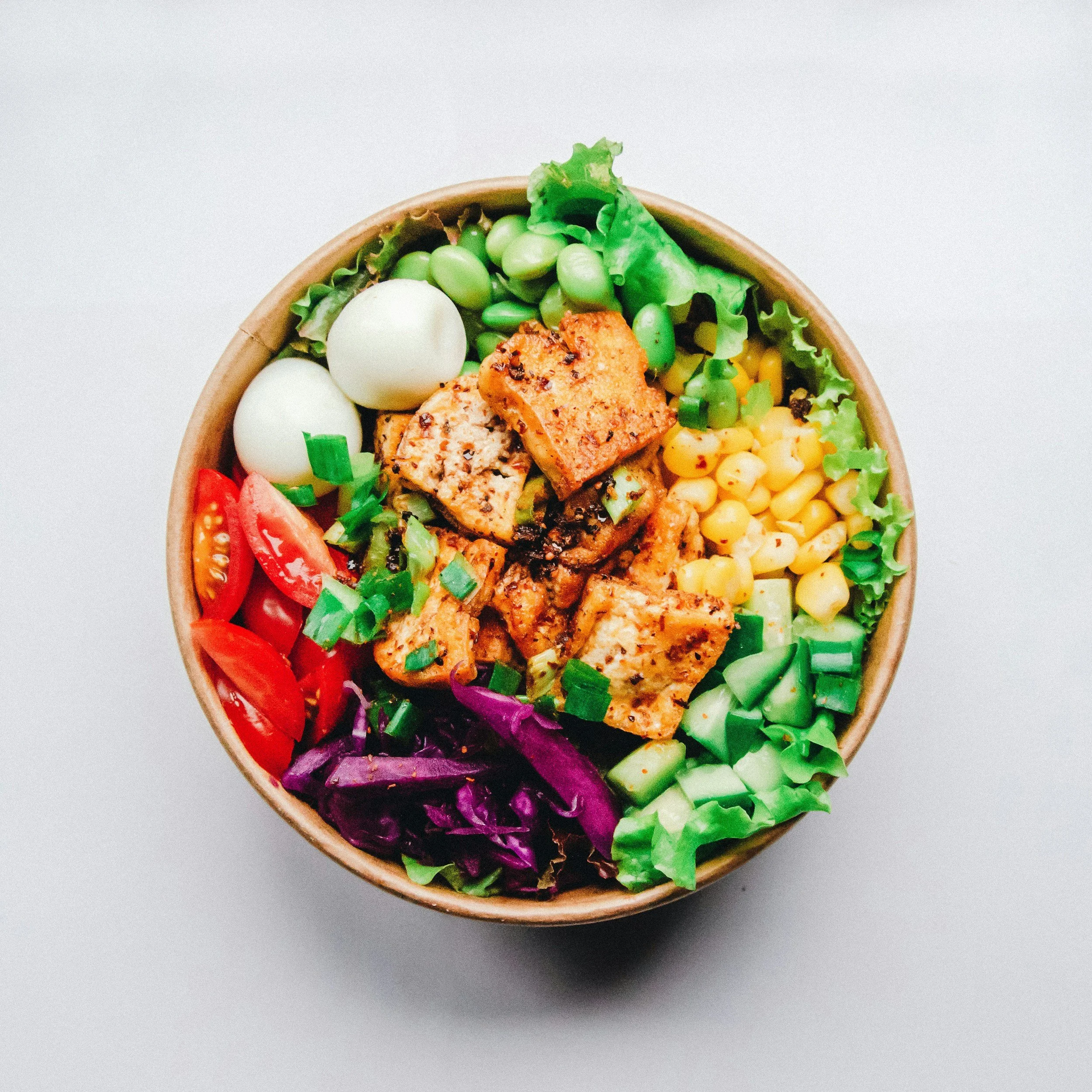Food Morality: the societal and personal practice of assigning moral value (e.g. good or bad) to foods, often leading to guilt, shame, and potentially disordered eating behaviors when a person eats these foods.
It likely comes as no surprise that humans like to categorize and compartmentalize. How we think and feel about the foods we eat are no exception. It has become the norm to assign good/bad food labels to different foods and food groups, and subsequently morally judge ourselves for either eating or not eating these foods. Each of these labels are personal yet there are some generalities that are commonly seen, such as categorizing high sugar, high carb and high calorie foods as “bad” while categorizing low calorie and low sugar foods such as non-starchy vegetables as “good”.
But these labels go beyond semantics. When we label a food as good or bad we are assigning a moral characteristic to these foods, and therefore ourselves, when we eat them. How many times have you told yourself that you were “so bad” for eating, say, a brownie? Or a piece of cake? Or a tater tot? Or perhaps you’re “trying to be good” when you go out with friends so you only order a lite salad for your lunch even though you really wanted that burger and fries?
Ultimately, it’s not the food that triggers the cycle of guilt - it’s the label we have attached to the food, and therefore it’s that label that we’ve ingested and internalized. As a result, what you eat starts to define the way you view and feel about yourself - whether that be good or bad or something in-between.
Let’s say you’re following a diet - and this diet happens to be fairly restrictive in nature. Let’s say you’re feeling really good about yourself because you’re following the “rules” (whatever they may be). But then let’s say you “fall off the wagon” and eat a “bad” food. This triggers guilt which manifests in a few ways: you start beating yourself up for “failing.” You say, “well I already fucked up, so I might as well eat all I can before I start again tomorrow.”’ Or maybe you decide that since you’ve been “bad” you deserve to be punished so you more heavily restrict your food intake and increase the intensity of your exercise in order to “burn away the bad” of you eating that forbidden food, only to feel out of control when you finally allow yourself to eat again.
This labeling can get sneaky too. It can show up even when you’re attempting to embrace your intuitive food choices by giving yourself permission to eat “bad” food. By continuing to label the food as “bad” you continue to internally berate yourself for eating it, even though that’s what your body and being may be asking for at the time.
Do these caustic mental gymnastics sound familiar?
Labeling a food distracts you from what your body is communicating. It can cloud how you read the information that your body shares with you about how a food makes you feel when you eat it. It can cloud being receptive to your body’s indications that it’s hungry for more or something different or that it’s satiated and ready for you to stop eating. All because you are distracted by the moral judgment and therefore the personal characteristic you have defined yourself as because you chose to eat that food.
The convoluted nature of food morality challenges us in often subconscious ways. It teaches us that we are a moral failure if we happen to eat foods that are labeled as “bad/unhealthy/junk” and this feeling of failure often spirals into defining how we perceive our self-worth. It causes us to harshly criticize our bodies, our hunger cues, our palates, and it negatively influences our self-perceptions. We become “terrible” and “disgusting” and “gluttonous” because we “can’t control ourselves” due to our “lack of willpower” - and diet culture excels at harnessing these self-shaming narratives because it keeps people engaging in their programs that ultimately leave us feeling stuck because they don’t work long-term.
It’s important to disengage and release these labels on an emotional as well as a technical level. Having cluttered and judgmental thoughts interrupts your process of practicing mindful and intuitive nourishment.
Keep in mind that these labels don’t mean diddly-squat. At some point, you decided that this food was good or bad, etc. - which means you have the power to UNLABEL that food too!
Am I saying that all foods are created equal? No I’m not. Are some foods more nutritious and nutrient-dense than others? Absolutely. But remember that the dose determines the poison. Food is neutral. Yet if we over consume some foods they may not make us feel as good as they would have if we had only eaten a smaller amount of them. An apple a day keeps the doctor away, but what if we ate a whole bucket of apples? We probably wouldn’t feel so good.
Does that make the apples bad? No.
Does that make us bad for eating more than one at a time? No.
Does that mean our personal threshold of tolerance for apples was exceeded by eating a bucket of them in one day? Yep.
Do we now have a better idea of how many apples to eat in a day so we don’t exceed our threshold of tolerance? Absolutely.
It’s all about determining your own personal threshold of tolerance for the food in question and not blaming, shaming, or guilting yourself for eating the food.
There is more to food and your eating experiences than just nutrition. If you try to irritatedly force-feed yourself a nutritious kale salad when you’re really craving a hearty burger with fries, the irritation you feel towards that kale salad will impact how your body feels about it. It’s going to stimulate your stress hormones and cause your metabolism to down-regulate. Compare that to if you honor your craving for that burger and fries and you mindfully savor each and every bite, the pleasure you experience from that meal will be felt in your body and it will up-regulate your metabolism because you are relaxed and responsive to that pleasurable meal. This is especially true when we can savor the food and experience, stop before becoming overfull, and continue on with our day without guilt. This will bring you joy. And more likely than not, your body will crave that kale salad sometime later on. Nutrition and self-nourishment are about the big picture.
“Perfect” eating is not sustainable nor realistic. Stop guilt-tripping yourself for making what you perceive to be a “wrong” or “bad” food choice. Berating yourself is not going to help you feel the way you want to feel. You cannot hate yourself or your behaviors into feeling self-love and self-acceptance. Therefore, let’s throw out the moral high horse and embrace the alternative - food neutrality.
Food Neutrality: an approach that removes moral judgment from food, viewing all foods as equal in value and encouraging a balanced, non-restrictive relationship with eating, rather than categorizing foods as "good" or "bad".
Food Neutrality embraces the concept that there are no “good” or “bad” foods - food is simply food. Food is neutral. Food neutrality also recognizes that all foods have a cause and effect. These causes and effects are not moral judgments, they are simply observations of how a food makes us feel and function. When we can non-judgmentally and curiously observe our experiences and responses with foods, we can better identify our personal threshold of tolerance for the food in question, and therefore feel empowered to eat that food in the amount that feels nourishing to us individually.
Steps For Shifting From Food Morality To Food Neutrality
Non-judgmental and curious self-reflection are hallmark characteristics of this practice. Hold space for self-compassion as you begin to explore your own history of engagement with food morality and how these labels have influenced your relationship with food and eating.
Step 1: Choose a food that you’ve internalized a moral judgment about.
Step 2: Acknowledge the moral labels you have attached to this food, and therefore yourself, when you consume it; write these down.
Step 3: Reflect upon the origin story of these food labels. When do you recall first thinking/feeling this way about this food? What influences contributed to their occurrence?
Step 4: Identify the root source of the label. Did the judgment come from you or someone else? How did it arise? Why, do you think, this judgment was internalized as truth?
This approach can help you to gain clarity around why your food beliefs and judgments came about. It helps to arrest the automatic thought/belief pattern and encourages recognition of an alternative way of thinking about the food that doesn’t involve blaming and shaming judgments.
If you like, you can journal more deeply about the origin stories of these narratives and how they have impacted your relationship with these foods, and subsequently yourself, throughout your life. As much as possible, take some time to reflect on these labels and the reason behind why you have these foods labeled the way you do.
It’s likely not possible to totally reject these labels right away. This, too, is a practice. And as you practice viewing foods more neutrally, you’ll start to be better able to challenge your food fears and actively start to reincorporate these foods into your eating experiences.
Non-Judgmental Curious Observation
When you go to eat a food that you have historically judged, give yourself space to pause. Acknowledge the judgment. Take a deep breath in, and as you exhale envision exhaling the judgment out too.
Now as you engage with eating the food, practice curiosity with the experience. Notice how it tastes. Notice how its texture resonates in your mouth as you chew. Notice how it feels to swallow the food and have it settle in your stomach. Notice your pace of eating the food, and non-judgmentally notice any thoughts or feelings that arise as you consume the food. As you continue to eat, notice any shifts in your hunger/satiety.
After you’ve finished eating, curiously notice any after effects. Do you feel satisfied, energized, sluggish, or foggy-headed? Curiously observe how your body feels. If you find you don’t feel the way you wished to, consider adapting how you eat the food in the future, so you can continue to gauge your threshold of tolerance for the food.
The above is an example of how you can practice experimenting with food. The experimentation is meant to give you the opportunity to better understand your personal threshold of tolerance for the food. Once you have a better idea of what this is, the more likely you’ll be to feel more comfortable with engaging with the food without fear or judgment.






